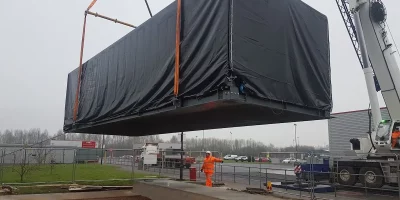In many successful IT facilities, today’s business has a lot of storage options and requirements around information control and is going to continue to grow and evolve. With that in mind, there is one aspect of the IT administrative process that some organisations dislike discussing: data centre migrations.
What if your business needs to move a massive amount of equipment and require a relocation services provider? What if it’s not as simple as just re-mapping a storage repository? In some cases, you might be migrating entire storage vendors to align with specific business strategies.
Either way, when dealing with critical corporate information, you need to complete a plan with key milestones and a reputable migration company to carry out this work. Below are 8 steps to creating an enterprise migration plan.
Business Impact Analysis
To best identify the business and operational requirements for a successful data centre migration project plan, a BIA should be conducted. The BIA process will involve different business resources who will work to ensure that their requirements are factored into the migration plan.
During this process, four elements will be identified:
- IT relocation support project team will examine and define available network bandwidth, storage, CPU and server needs, allowable downtime, and the data centre migration schedule.
- As more relocation teams become involved in the process, database and system administrators define application and database requirements.
- Key business data centre partners will work to define the importance of, and requirements for, specific applications and types of data.
- Internal security and compliance groups define compliance requirements for a given infrastructure
This document is not completed only for a data centre migration plan. The BIA is a critical plan that helps with disaster recovery planning and infrastructure management for any successful data centre migration.
Discovery and Requirement Planning
The discovery step helps define migrations of server hardware and software environment for the data centre migration, as well as overall requirements for the storage migration. Leave no feature unchecked in this process and ensure that you conduct a deep discovery of your current systems. This means understanding dependencies, permissions, user groups, how it is organised, network configurations, and more.
Mapping and Storage Design
Once you complete the discovery phase, you will be able to use this information to create your mapping and design architecture for the new ecosystem. In some cases, this will be easy when working with the same vendor which may be more cost-effective. However, for heterogeneous migrations or working with multiple vendors this process is especially important. Although there are migration tools which can help, there needs to be a complete manual verification process to ensure proper data, server storage, and configuration mapping and design.
Creating the Network and Storage Migration Plan
Within your successful data centres, in many situations, you’ll be able to checklist your secondary storage or control ecosystem in parallel to your existing environment. This allows for a seamless and cost-effective storage and network migration. Nonetheless, you still need to have a complete migration plan outlining the various contact information. You need to understand how this can impact users, your business, server applications, and other workloads. In creating your plan – consider these four points:
Constraints must be identified through business and operational requirements
Make sure to consider your business operations when doing migrations.
Identify all of the information to be migrated and all of the necessary associated attributes
When creating the data centre migration plan, use your mapping and design metrics to ensure that all information attributes are accounted for and configured.
Use vendor-specific migration tools if needed
You don’t have to do this alone. Aside from being able to work with the data centre migration, server storage partner or relocation services, you can leverage vendor-specific migration tools. These can help you plan out the design, requirements, and even the migration process.
Always incorporate environment storage and application best procedures
Does the VM need to be shut down? Can the VM be migrated via hypervisor migration? Can you live-migrate storage repositories? When working with virtualisation, next-gen storage appliances, and very critical workloads ensuring best practices around apps and storage is necessary.
Since every environment is unique in its requirements, creating a data centre migration plan is often a challenge. Different types of information may require different migration tools and strategies. Furthermore, business and operational requirements (downtime for example) may require creative ways of migrating the data.
Storage Preparation and Provisioning
During provisioning, the destination storage environment is prepared for the data move. This is where you design your repositories, LUNs, volumes, specific policies, security rules, virtualisation integration, and more. Remember, we’re working with a lot of different types of storage environments today.
Understand the differences between hybrid arrays, all-flash, and traditional spinning disks. Furthermore, know how to provision new features like caching and even dynamic provisioning/de-provisioning features. Also, when designing around a new storage system, ensure that you’re familiar with all of the new features in the environment.
Validation Testing
This is a critical step. You can do things like load-testing and ensuring that policies and configurations are properly transferred over. This is your chance to create a “production” test environment to ensure your new storage solution can handle user and business requirements.
Final Migration Testing and Validation
The final and certainly very critical step is to validate the post-migration environment. This final step will confirm that all business and technical expectations have been met. From a testing side – at a minimum – network access, file permissions, directory structure, and database/applications need to be validated in their new environment.
In planning your storage migration process, make sure to work with storage engineers and architects who can help guide you throughout the process. Remember, you’re dealing with very critical information resources here. Spend the extra time planning effective migrations, make sure you conduct effective backups and work to ensure the safe transfer of your information.
In some cases, this means working directly with the vendor, in other cases, a partner can help. Either way, migrations should be taken seriously. Storage outages are never fun; good planning can help avoid these types of situations and keep an environment up and running.






